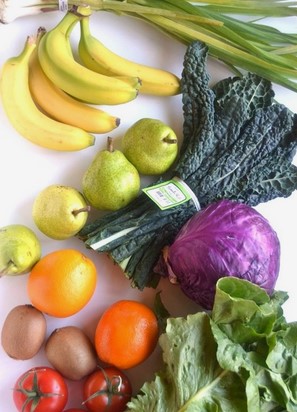Good nutrition is fundamental to overall health and well-being, yet access to nutritious food remains a challenge for many people worldwide. In an era where food insecurity, malnutrition, and diet-related health issues are prevalent, innovative solutions are needed to ensure that everyone has access to healthy and affordable food choices. One such solution gaining momentum is the integration of insurance with nutrition-focused initiatives. This article explores the concept of using insurance to promote nutrition and how it can contribute to improving public health outcomes.
The Link Between Nutrition and Health
Nutrition plays a critical role in maintaining optimal health, supporting growth and development, and reducing the risk of chronic diseases. A balanced diet rich in fruits, vegetables, whole grains, and lean proteins is essential for meeting nutritional needs and promoting overall well-being. However, factors such as food insecurity, limited access to healthy foods, and inadequate nutrition education can hinder people’s ability to make nutritious choices, leading to malnutrition and health issues.
Insurance as a Catalyst for Nutrition
Insurance can serve as a catalyst for improving nutrition by addressing the underlying factors that contribute to food insecurity and poor dietary habits. By providing financial protection and support to individuals, families, and communities, insurance can help alleviate the economic barriers to accessing healthy foods, promote nutrition education and awareness, and incentivize healthier lifestyle choices.
Health and Wellness Insurance Programs
Health and wellness insurance programs that include coverage for preventive services, nutrition counseling, and wellness incentives can encourage individuals to prioritize their health and make informed food choices. By offering coverage for services such as dietitian consultations, healthy meal planning, and nutrition workshops, insurance providers can empower policyholders to adopt healthier eating habits and lifestyles.
Food Security Insurance
Food security insurance aims to protect individuals and communities against food shortages and price volatility by providing financial support during times of economic hardship or agricultural shocks. By offering coverage for food purchases, subsidies for nutritious foods, and support for local food production, food security insurance can ensure that everyone has access to the food they need to maintain a healthy diet.
Farmers and Agricultural Insurance
Farmers and agricultural workers play a crucial role in food production and supply chain. Agricultural insurance that covers crop failures, livestock losses, and income instability can help farmers mitigate risks, invest in sustainable farming practices, and contribute to the production of nutritious and affordable food for consumers.
Community-Based Insurance Programs
Community-based insurance programs that focus on promoting nutrition and health at the grassroots level can have a significant impact on improving dietary habits and reducing nutrition-related health disparities. By engaging with local communities, tailoring insurance products to their needs, and collaborating with local organizations and stakeholders, these programs can foster a culture of health and well-being that extends beyond insurance coverage.
Public-Private Partnerships
Public-private partnerships that bring together government agencies, insurance providers, healthcare organizations, and non-profit entities can create synergies and maximize the impact of nutrition-focused insurance initiatives. By pooling resources, sharing expertise, and coordinating efforts, these collaborative partnerships can develop innovative solutions to address food insecurity, promote nutrition education, and improve public health outcomes.
Conclusion
Harnessing insurance for nutrition is a promising approach to addressing the complex challenges of food insecurity, malnutrition, and diet-related health issues. By integrating nutrition-focused initiatives into insurance programs, providing coverage for preventive services and wellness incentives, supporting farmers and agricultural workers, and fostering community engagement and collaboration, we can create a more equitable, resilient, and healthy food system for all.
In conclusion, eating well and insuring well go hand in hand in promoting nutrition and improving public health. By leveraging the power of insurance to address the root causes of food insecurity, support sustainable food production, and empower individuals and communities to make healthier food choices, we can build a brighter and healthier future for everyone. Embracing insurance as a tool for nutrition can make a significant difference in the lives of individuals and communities, ensuring that everyone has the opportunity to thrive and lead a healthy and fulfilling life.
